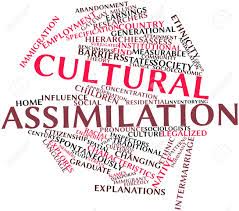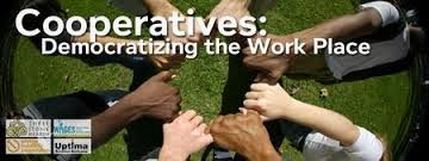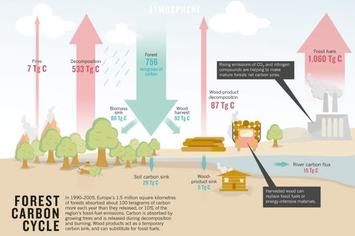 Powell’s sponsored “Banned Books Week” is September 27 to October 3, and they highlight banned books and various reasons some schools and libraries have made the arbitrary decision to ban a book in Oregon. Powells reviewed hundreds of documented appeals to remove materials from a local public library, school library, or course curriculum. A few of the 30 books identified were challenged in Oregon, along with some details about the objections and outcomes. Here are some of the books subjected to review by famous authors you might recognize. “Light in the Attic” by the late Shel Silverstein A perennial favorite, Shel Silverstein's collection of poems was challenged in both the Salem-Keizer Public Schools and the Eagle Point School District, for the possibility of provoking children to "act in opposition to family taught behavior and values" and exposing children to frightening or gory material. Outcome: Book retained “Ramona the Brave” by Beverly Cleary The beloved Ramona Quimby by Oregon's own Beverly Cleary was challenged in 1993 at the Salem-Kezier School District for taking Jesus's name in vain. Outcome: Retained. “Harry Potter and the Sorcerer’s Stone” by J. K. Rowling The first part of Rowling's legendary Harry Potter series was released in 1997 and has been challenged countless times since then. It was opposed at Bend's Three Rivers Elementary School in 2000 due to its references to witchcraft and concerns that the book could "lead children to hatred and rebellion." Outcome: Retained. “A Wrinkle in Time” by Madeleine L'Engle Madeleine L'Engle's Newbery Award–winning classic was challenged in 1990 at the Mid Valley Elementary School in Hood River County on the grounds of sorcery, witchcraft, magic, and having a demonic character. Outcome: Unknown. “Then Again Maybe I Won’t, by Judy Blume Judy Blume's novel about a boy's turbulent adolescence was challenged at the Salem-Keizer School District in 1989. Reasons: it is a "dismal tale of a young boy's inability to cope and his very inappropriate responses to the changes taking place in his life," and conveys a "detrimental attitude towards a child's natural development and raises questions about sexual arousal that elementary school students are too young to experience and would leave them with the wrong attitude about the opposite sex." Outcome: Retained. “Absolutely True Diary of a Part Time Indian” by Sherman Alexie Alexie's National Book Award–winning first novel for young adults is one of the most frequently challenged books in the country. In 2014, several people challenged its use in the Sweet Home 8th grade language arts class "because of its use of words not allowed by the student code of conduct and its discussion of sexual matters." Outcome: Retained for 8th graders. The school board voted to keep the book as long as parents were informed of a specific alternative lesson in a timely fashion. “The Clan of the Cave Bear” by Jean Auel Auel's prehistoric novel about a group of Neanderthals was challenged by a parent at the Cascade Middle School library in Eugene. Concerns about a rape scene in the book, and that students might try the sexual acts and values depicted in the book, actually led to its removal from the library in 1992. Outcome: Removed “Equus” by Peter Shaffer In 1994, a parent at Redmond High School requested that Peter Shaffer's Tony Award–winning play be removed from a sophomore honors required reading list. The parent disapproved of sexual messages, objectionable language, and "Christian insults." Outcome: Removed from required list; still on supplemental list with parental permission required, and in the school library. “The Stand” by Stephen King King's post-apocalyptic tome faced opposition in 1989 at the Whitford Intermediate School Library in Beaverton, and again in 1997 in the Douglas County Library System, for language, graphic sexual scenes, and violence. Outcomes: Restricted to ninth-grade students with parental consent at Whitford; retained at Douglas County Library. Most of the 30 books reviewed were retained with stipulations for only junior high or high school students with parental permission to read. In addition for recognition of “Banned Books Week” this year, Powells reviewed hundreds of records of challenged materials reported by Oregon schools and libraries over the past 35 years. In the process, they came across some surprising, amusing, and, at times, weirdly specific arguments for banning books. Here are a few of the 10 particularly strange reasons that demonstrate how absurd it is to let an individual or group determine what books are available to all of us, according to Powells review. Note: in most cases, the books were not ultimately removed, but in two instances, the outcome was undocumented. You can read all of them on Powells website at the link under resources. 1. Use of aliens to represent weather information: The Book: Earth Weather, as Explained by Professor Xargle by Jeanne Willis Where It Was Challenged: Multnomah County Library Date: 1998 Full Grievance: "Use of aliens to present weather information; inappropriate for children under 8 years old." Outcome: Retained by library. 2. "Conjugal love between mice." The Book: 2. Abel's Island by William Steig Where It Was Challenged: Fairfield Elementary School in Eugene Date: 1994 Full Grievance: "Violence and mention of conjugal love between mice." Outcome: Retained by school. 3. "Use of an amulet to prevent pregnancy." The Books: 3. Song of the Lioness, Books 1-3 by Tamora Pierce Where It Was Challenged: David Hill Elementary School in Hillsboro Date: 1989 Full Grievance: "Sexual references and the use of an amulet to prevent pregnancy." Outcome: Removed by a library staff member but later returned to the shelves. 4. "Teenagers already have trouble with their emotions without being stimulated by poorly written books." The Books: More than 50 Harlequin romances were threatened with removal Where They Were Challenged: Glide High School library Date: 1984 Full Grievance: "Teenagers already have trouble with their emotions without being stimulated by poorly written books." Outcome: Unknown. In “Fahrenheit 451,” the degree when paper burns, Bradbury creates a universe in conflict between the stagnation of ignorance versus timeliness and stubborn determination to embrace knowledge and save the written word. The main characters struggle amid these tensions. The fireman’s governmental duty is to destroy knowledge by burning books and promote ignorance in order to equalize the population and promote sameness, not unlike current individuals who try and use censorship to mitigate literary diversity. The fireman is conflicted and encounters people who see the spark of doubt about this approach. His resultant search for knowledge destroys the unquestioning ignorance he used to share with nearly everyone. He confronts the torpid status quo, develops humanity for the greater good and emerges the hero. Enlightened citizen revolutionaries in the book commit to the preservation of knowledge by memorizing books and go into the forest reciting them, lest the stories be lost forever as books are burned. While books are not being burned today, Powells reminds us of the forces who seek to control what is read compromising the freedom of the local library to be a bastion of American liberty and repository of learning and literature. If you had to memorize a book, not the Bible or religious text, what would it be? I would memorize “The Odyssey of Homer” because the themes have remained universal and relevant throughout the centuries: Love, Hate, Betrayal, Hospitality, Treachery, Loyalty, Jealousy, Mercy, Reconciliation, and Redemption. Sing in me, Muse, and through me tell the story… Robert Fitzgerald translation The Odyssey of Homer 1961 Resources Powells
0 Comments
 This kind of ritual is familiar to what many know as “Burning Man” celebrations. The gathering is modernity’s connection with humanity, past and present. In the United States “Burning Man” is a festival of performance art and creativity culminated by burning a symbolic giant human structure made of wood. Its ancient seasonal association, however, is not as prominent. What is the equinox? The autumnal equinox is when day and night are approximately equal in length. After Sunday, the hours of daylight will become shorter as the sun will rise later and nightfall sooner. Our ancestors used the sky as both clock and calendar, as they observed the path of the sun across the sky. They built observatories to track the sun’s yearly progress. The Incas at Machu Picchu in Peru were able to precisely indicate the date of the two equinoxes and other significant celestial periods. The earth is tilted on its axis by 23 ½ degrees, and the Northern and Southern Hemispheres trade places in receiving the sun’s light, indeed, its summer’s warmth. The Spring and Fall equinox signal when the tilt of the earth’s axis and orbit around the sun combine so that the axis is inclined neither away from, nor toward the sun. Celebrate the autumnal equinox as the celestial signpost, as the Earth orbits around the sun. Ways to celebrate the autumnal equinox called Mabon Mabon is the ancient name for the autumn equinox when the harvest is almost over. The fields are nearly bare, because the crops have been stored for winter, or the vegetables and fruit preserved for winter use. It’s a spiritual time when we pause to honor the changing seasons, and celebrate the second harvest in spiritual reflection and celebration for the gifts of the Earth. The cornucopia is one of the most famous symbols of the season with fruit and vegetables spilling out of it signifying abundance. Gratitude for this bounty can be the centerpiece of your celebration in a restorative self blessing and thankful meditation. Write a “gratitude list” with the attitude that gratefulness brings more abundance our way. What are you glad about in your life? Gladness comes in all sizes from being thankful for a good vegetable crop or having a home to live in, and the health and happiness of your family and friends. Love and gratitude amid fire and loss In California and in particular Lake County where I live, celebrations here are bitter sweet because of the fires in the last two months that have ravaged the area. Stories of survival and gratitude for getting out alive with very few belongings are being told in the media and Facebook. Still, many here are suffering loss of homes and all their possessions, but at the same time are grateful for those who bravely fought the fire and saved many lives and homes—even amid the horrible losses. Gatherings of friends and family for a festival dinner here have a special significance this year. As many people in California suffered in the numerous fires, the evacuation centers have been blessed with an abundance of donations of food, sheltering tents, clothing, water, food for domestic pets and farm animals, and much more. Sharing the bounty of the fall season with the less fortunate here by so many relief agencies, volunteers, and private individuals is the one saving grace in a fire season that has ravaged the drought-torn state. Rituals are a testament of hope for the future Make a family alter to celebrate the Earth’s abundant gifts of food, plants and flowers. If you have children, allow them to draw pictures and write their own sentiments. Handmade items are particularly cherished with pictures and scribed blessings and share a special significance for families and individuals no matter their circumstance. Mother Nature loves to know she is appreciated and will bless your future. Celebrating the Autumnal Equinox is personal and reflects an individual spiritual path as one identifies with the gifts of the Earth. A peaceful connection and participation in nurturing the soil and all life not only ensures longevity, but also establishes a reverence for place and responsible stewardship of the land and each other. Resources September equinox
 Assimilation by definition does not suggest ethnic or racial eradication, rather, an attempt to absorb or incorporate into the main culture; however, the history of assimilation in the United States and Australia reveal systemic, institutional extermination and degradation. Both English speaking countries are guilty of detrimental assimilation of indigenous peoples including removing native children from to families to state schools, disallowing native languages, stealing native land, and segregation. In the US this dynamic has a punitive history. American policy was set by then President Thomas Jefferson who was more concerned with White expansionism than preservation of Native Americans. His devious theory consisted of encouraging natives to relinquish hunting for agricultural pursuits. “The extensive forests necessary in the hunting life will then become useless,” he said in a confidential message to Congress in 1803. (Takaki 1993) President Andrew Jackson furthered these policies with the Indian Removal Act of 1830. By the end of the 19th century three competing ideologies of assimilation had taken root in America: 1) Anglo-conformity; 2) Melting pot theory; 3) Cultural pluralism. All three have been evident in American society in varying degrees in the last 100 years. Anglo-conformity is re-rooting in the Republican Party this year as candidates perpetuate the fear of “other” using stereotypes and “shock doctrine” to advance an immigration political agenda focusing on deportation of 11 million undocumented, exaggerating the efficacy of a border wall, separating families, and overturning the 14th Amendment that ensures citizenship for infants born in the U.S.. The demand by some Republicans that immigrants learn English in order to show true allegiance is not shared by all Republicans. During the Republican debates on Wednesday, Sen. Marco Rubio (R-Fla) recalled his immigrant grandfather who did not speak English but imparted his love of America and its values to him in Spanish. Anglo-conformity was used in name changing beginning with African slaves assuming the names of their owners and continued into the 20th century. New immigrants from Europe with ethnic sounding names changed them to appear more Anglo driven by the urge to become socially accepted and economically successful in America. Some of the most notable were entertainers with Jewish, Polish, German, Italian and others. Names were not the only areas where immigrants shed their culture. Ethnic food, dress, religion, customs, and values were discouraged in favor of Anglo conformity and assimilation to Protestant lines of religion and beliefs. The “melting pot” concept imagined a country where all immigrant populations would live together and “melt” presumably by intermarriage into a new distinct American identity. Among the three, this concept has been the most controversial because it relies on the primacy of Anglo-conformity as the primary tenant for measuring the success of the American Experiment. In a study done at New York University, economic researchers posit that before 1960 American immigration theory relied on assimilation technology to transform immigrants of various ethnicities and religions into a common American culture. Studies, however, revealed that immigrants interacting with American society met with cultural difficulties and even hostility negating the idea that immigrants would naturally assimilate in a melting pot process due to social and economic barriers. In 1995 a researcher measured the persistence of cultural traits studying the assimilation of immigrants’ ‘‘ethnic capital’’ in the United States, and found quite slow rates of cultural convergence. Melting pot theories of assimilation have failed because they neglected to consider the well-defined preferences of parents to pass on cultural traits to their children through socialization allowing them to influence ethnic traits and characteristics including language and religion. An individual’s choice of marriage partner is the crucial factor in determining the transmission of cultural traits to the next generation. Minorities have more highly segregated marriage markets; therefore, the tendency for cultural transmission remains isolated within the group. Cultural pluralism, on the other hand, assumes that all ethnic communities retain their cultural autonomy comprising a “mosaic” that is distinct and equal, but still part of a unified whole. This is known today as “multiculturalism” and is the dominant theory displacing archaic concepts of enforced assimilation that have not only destroyed entire populations, but also contributed to perpetuation of ethnic stereotypes, scapegoating, skepticism and cynicism. During the August Republican debates, Louisiana governor and candidate seeking the Republican presidential nomination Bobby Jindal said, “Immigration without assimilation is an invasion.” Jindal has repeatedly harped on forced assimilation since he announced he was seeking the Republican nomination. During his speech he talked about not having hyphenated names. Americans and immigrants need to better assimilate with society. The notions of Mr. Trump and Governor Jindal, indeed many in the Republican Party, do not reflect the modern trajectory of socialization modalities existing among ethnic minorities with a strong emphasis on multiculturalism rather than assimilation that insists a minority must give up their identity in favor of the host country. Cultural pluralism or multiculturalism persists as an outgrowth of the demand by ethnic, religious and racial minorities to maintain their identity. The demand is a result of social forces, whether economic or social, responsible for culturally homogenous communities, family units and social environments to impart ethnic traits and culture from generation to generation. Republicans who persist in demanding Latino assimilation are by its nature alienating one of the fastest growing minority groups in America. According to the Wall Street Journal Hispanics could account for 40 percent of the job growth by 2020. Over the next five years they will account for more than 75% from 2020 to 2034, according to a new study. That will account for approximately 11 million jobs out of the projected 14 million new positions across the economy. In 1909 William James wrote “A Pluralistic Universe,” and proposed a “plural society,” for he saw it as “crucial to the formation of philosophical and social humanism to help build a better, more egalitarian society.” James argues in A Pluralistic Universe that the world is not a uni-verse but a multi-verse honoring human experience of “manyness,” flux and disconnection following a pattern of daily experience. The Republican call for forced assimilation of Mexican-Americans (yes, I used a hyphenated identity) is anachronistic invoking Anglo-conformity rather than James’ “manyness,” acculturation and multiculturalism. Republican ethnocentricity has positioned Democrats to be the party of inclusion and welcome to all minorities and definitely a friend to immigrants of all races and religions. The evolution of advanced societies is fluid and incumbent upon democratic change or risk stagnation and discontent. Jolyon Howarth, British scholar of European politics, adds dimension by saying, “We become so accustomed to the prison that history had built for us that, like recidivists or long-term hospital patients, we become incapable of visualizing any other kind of existence. No other world it seemed could exist.” Resources; “Origins and Destinies: Immigration, Race and Ethnicity in America,” Silvia Pedraza, Ruben G. Rumbaut. Wadsworth Publishing, 1996. “Different Mirror: A History of Multicultural America,” Ronald Takaki, Little, Brown & Company (Canada) Limited, 1993. http://www.econ.nyu.edu/user/bisina/bisinverdier_qje.pdf http://blogs.wsj.com/economics/2015/02/24/hispanics-could-account-for-40-of-u-s-job-growth-by-2020/ http://www6.miami.edu/eucenter/Boening_EuroIslam_EUMA2007edi.pdf http://politicalscience.yale.edu/people/jolyon-howorth http://www.nebraskapress.unl.edu/product/Pluralistic-Universe,672467.aspx
Although 3 trillion might seem like a lot, human activity is compromising tree abundance worldwide and responsible for the loss of billions of trees annually. Since the beginning of modern agriculture 12,000 years ago, the number of trees on Earth has dropped by 46 percent, they said in the study.
Human population expansion responsible for tree-density depletion “The scale of human impact is astonishing,” says Thomas Crowther, an ecologist now at the Netherlands Institute of Ecology in Wageningen who led a study while at Yale University in New Haven, Connecticut. “Obviously we expected humans would have a prominent role, but I didn’t expect that it would come out as the as the strongest control on tree density.” “Crowther and his colleagues merged these approaches by first gathering data for every continent except Antarctica from various existing ground-based counts covering about 430,000 hectares. These counts allowed them to improve tree-density estimates from satellite imagery. Then the researchers applied those density estimates to areas that lack good ground inventories. For example, survey data from forests in Canada and northern Europe were used to revise estimates from satellite imagery for similar forests in remote parts of Russia,” they said. The highest tree densities, calculated in stems per hectare, were found in the boreal forests of North America, Scandinavia and Russia. These forests are typically tightly packed with skinny conifers and hold roughly 750 billion trees, 24% of the global total. Tropical and subtropical forests, with the greatest area of forested land, are home to 1.3 trillion trees, or 43% of the total, which includes the Amazon rainforest that is currently experiencing human encroachment and deforestation on a massive scale. Not all tree populations have the same environmental impact Susan Trumbore a biochemist at the Max Planck Institute for Biogeochemistry in Jena, Germany says, “The number of trees is just one piece of the puzzle,” says Trumbore. “A tree in the tundra is not the same as a tree in the rainforest.” “The number of trees is just one piece of the puzzle,” says Trumbore. “A tree in the tundra is not the same as a tree in the rainforest.” The amount of carbon the Amazon rainforest is absorbing from the atmosphere and storing each year has fallen by about a third in the last decade, reported in a new 30-year study by almost 100 researchers, according to the Carbon Brief. This decline in the Amazon carbon sink amounts to one billion tons of carbon dioxide - equivalent to over twice the UK's annual emissions, the researchers say. This further posits the greater significance of the rainforest depletion over the tundra. The latest numbers raise questions about which species are represented where and how particular forest types evolve. Crowther cautions that even though the latest figures do not change the current science on carbon storage or diminish the impact of deforestation. “We’re not saying, ‘Oh, everything’s fine’.” In fact, the work suggests that in some places where trees would be expected to thrive — such as warm, moist regions — human activities such as farming have largely pushed forests aside. Global forest sink and climate change mitigation The global forest sink is the ability of unharvested forests, for example, to absorb more carbon than they release. Environmental changes including naturally occurring phenomena, like weather events including droughts, together with human encroachment resulting in deforestation upset the natural steady conditions of absorption affecting tree populations. “To make good decisions about how to cultivate forests for climate-change mitigation, such as whether it is better to harvest or conserve trees, we must better understand the cause and future behavior of this in situ [in its original place] carbon sink. Until more is known, we propose that forestry management should prioritize 'win–win' strategies — those that increase both forest stocks and timber harvest, through measures such as protecting trees from animals, or replacing dying or low-productivity forests,” according to Nature Magazine. Finally, forest management techniques should be prioritized when possible, but these techniques only work if forests are managed methodically, not depleted to merely make room for expanding populations requiring more space for agriculture without considering the environmental impact in terms of balance between humans and preserving forests. Climate change, however, can be mitigated apart from the evolution of the global carbon sink by replacing dying or low-productivity stands, protection of young tree sprouts during harvesting, and planting resilient tree mixes that naturally nitrogen fix in the soil. Some of the strategies appear to be trial and error, but there is a method in the seemingly arboreal madness. Some scientists believe forest management is more of a “gamble than a scientific debate.” By following 'no-regret' strategies, they say we can buy time while we learn more. Clearly the formula for doing something instead of nothing is better. Sequester is a familiar, albeit scary, term lately in economics, but it also relates to the capacity of plants, trees, and grasses to move CO2 from the atmosphere through their roots into the soil, thus, removing it from the air mitigating climate change. Billions of acres of trees, no-till farm land, range land and forests can sequester enough CO2 to re-stabilize the climate. Maintaining and managing the planet’s 3 trillion trees is a powerful component to ensure their contribution in this vital process considering the expanding world’s human population which is projected to grow from the current 7 billion to 9.7 billion by 2050. Resources Nature Nature global count http://www.nature.com/news/carbon-sequestration-managing-forests-in-uncertain-times-1.14687 https://www.organicconsumers.org/news/carbon-underground-reversing-global-warming http://www.carbonbrief.org/blog/2015/03/amazon-rainforest-is-taking-up-a-third-less-carbon-than-a-decade-ago/ "Working Americans can’t afford to stay home when they’re sick because they don’t have paid sick days,” said Dr. Jody Heymann, Director of the Institute for Health and Social Policy and Professor of Epidemiology at McGill University and lead author of the report. "The economic costs of a serious flu outbreak are potentially enormous.
We can't afford to wait any longer before providing American workers with paid sick days,” they said. The President’s executive order will start in 2017, and government contracts must provide workers with a minimum of one hour of paid sick leave for every 30 hours worked. But they are not limited to this amount and can be more generous with employees. Monday’s announcement of the executive order follows a series of measures by this administration to expand access to paid leave. In January, Obama issued a Presidential Memorandum directing the government to advance up to six weeks of paid sick leave for the birth or adoption of a child, or for other sick-leave eligible uses, according to Raw Story. Parental leave after the birth of a child is also a consideration, and the President has recommended that Congress pass legislation to ensure both mothers and fathers have equal access to six weeks of additional leave. In a Labor Day appearance in Boston to make the announcements, Obama will also call on Congress to pass the Healthy Families Act requiring all businesses with 15 or more employees to offer minimum seven days paid sick leave yearly. According to the White House, an astonishing 44 million private-sector workers, about 40 percent of the total private-sector workforce, do not have access to paid sick leave. Obama will also announce new Department of Labor rules giving federal contract workers new tools to demand equal pay. The US ranks last in the world in every measure regarding family policy in a study by Pew in major areas such as paid maternity leave, sick leave, child care, flexible work hours, and bans on mandatory overtime. Executive orders are an expeditious way for a president to enact changes, but permanent changes need to be passed by Congress and become the law of land. Calling on Congress to put American workers and the Middle Class first on their agenda is clearly the direction the country is moving. Resources http://www.rawstory.com/2015/09/obama-to-order-government-contractors-to-offer-workers-paid-sick-leave/ http://www.cepr.net/documents/publications/psd-summary.pdf http://www.washingtonpost.com/blogs/she-the-people/wp/2014/06/23/global-view-how-u-s-policies-to-help-working-families-rank-in-the-world/  Democratizing work Democratizing work Peck stressed the importance of the one worker, one vote principle, the commitment to invest in the community (social transformation) and wage solidarity, limiting management salary to 70% of the market rate. MCC is a strong diversified manufacturing conglomerate, the 7th largest in Spain and competitive globally in manufacturing. Democratizing a workforce system eliminates the divide between workers, management, and board of directors. Shared decision making includes salary distribution, working conditions, product development, purchasing, and even retirement security by investing in retirement homes for employees. Mondragon is not the only European example of a successful cooperative rewarding ingenuity and commitment. In Italy the Marcora Law enacted in 1985 ensures a unique approach to unemployment. Laid off workers are given a choice on how to use their unemployment benefits. They can go on incremental payments of unemployment or they can draw all the money in a lump sum if they join together with ten others and invest in a cooperative venture. Why does the United States need to democratize work? The slow demise of the Middle Class lowering the standard of living started in the 1970s as salaries began to stagnate. Corporations abandoned the United States for overseas markets taking advantage of low pay and lax environmental restrictions increasing profit margins leaving American cities as ghost towns of their former selves. Richard Wolff, Professor of Economics Emeritus, University of Massachusetts, Amherst from 1973 to 2008 and visiting Professor in the Graduate Program in International Affairs of the New School University, New York City, said the deterioration of the American standard of living and income inequality are linked to the deterioration of President Franklin D. Roosevelt’s New Deal. The segue away from programs ensuring upward mobility for the poor and Middle Class is more shocking than ever and blames both political parties for failing the Middle Class—in part because they lack diversity in points of view. The Great Recession of 2008 was the result of a trend that had been percolating for decades—corporations and banks became reckless under deregulation that began under the Reagan Administration and continued for 30 years. The Glass-Steagall law of 1933 that had separated commercial and investment banking for 70 years was repealed in 1999 ensuring vast sums of capital could be manipulated by banks empowering corporations. From 1978 to 2008 the divide between the average salary of workers and salaries of investment bankers widened. Average workers realized a 10 percent increase and investment bankers a 150 percent salary increase. Financial fraud was an outgrowth of deregulation, many times including the real estate market writ large in the housing crisis. The savings and loan crisis in the 1980s and 1990s was a harbinger of the future housing collapse in 2008 that robbed Americans of their homes and personhood. Income inequality is the direct outgrowth of capitalism gone awry and unregulated. In 2009 the documentary film maker Michael Moore introduced his film “Capitalism: A Love Story.” Moore confronted Goldman Sachs, Walmart, and government officials about their contributions to the Great Recession and housing crisis. Also evangelicals, who comprise a component of the conservative tea party, are confronted on whether Jesus would be a capitalist. While the evangelical conservative group embraces free market capitalism, the contradictions inherent in their belief systems cannot be denied. But he was not the first film maker to decry the dangers of capitalism. In the 1926 Fritz Lang movie “Metropolis,” a fictionalized city in 2026 is maintained by a worker class. The theme is chilling and almost too real as capitalism has created an underclass workforce that performs like robots. The wealthy industrialists rule the city while an endless supply of workers operates machines to provide the “power” for the city. The metaphor is obvious in the stark antagonism and separation of the poor and rich, where income class distinction is sustained by a corporate structure dependent on maintaining inequality. The similarities to 21st century fugitive capitalism are unmistakable. The slow demise of the Middle Class is forcing more people into low paying jobs and the poor without a government safety net. Lang’s film might appear to be an exaggeration, but the prophetic images mirror disparities today as a result of deregulated banks and the rise of corporations. Income inequality is real and measurable. Professor Wolff believes the change must come from the people in movements like “Occupy.” But there needs to be organization and structure, which “Occupy” lacked. Too often, he believes, people turn to the government for answers when they have the power to unite and demand change. Workers need to become unionized again because currently only 7 percent of American workers belong to unions. In a stunning move in 2010 The United Steel Workers of America partnered with Mondragon Corporation. The cooperative model is in the United States. The collaboration with the United Steelworkers of America (USW) plan is to identify and convert 5 steel companies to a worker co-op form of ownership. Since the USW/MCC partnership was announced five years ago, the USW has been working to identify potential companies for conversions. Ten companies are under consideration. I agree with Professor Wolff, and I also believe money has to be taken out of politics, so representation in state and federal governments reflects the population, not who can buy their way into an elected office and once there become indebted to campaign donors and lobbyists. The Mondragon model is the most profound and transformative example of democracy in action in people’s lives using a cooperative system. Woody Guthrie sang, “You can’t scare me, I’m sticking to the union” during the union movement in the 1930s and 40s. And continued to echo the sentiments of the working class with “this land is your land, this land is my land.” It was a manifesto on equality, and the lyrics are as poignant and true today as they were in 1940. Resources http://www.mondragon-corporation.com/eng/ http://www.usnews.com/opinion/blogs/economic-intelligence/2012/08/27/repeal-of-glass-steagall-caused-the-financial-crisis https://classwarinamerica.wordpress.com/tag/marcora-law/ http://geo.coop/node/584 |
Dava Castillo
is retired and lives in Clearlake, California. She has three grown
children and one grandson and a Bachelor’s degree in Health Services
Administration from St. Mary’s College in Moraga California. On the
home front Dava enjoys time with her family, reading, gardening, cooking
and sewing. Archives
November 2015
|







